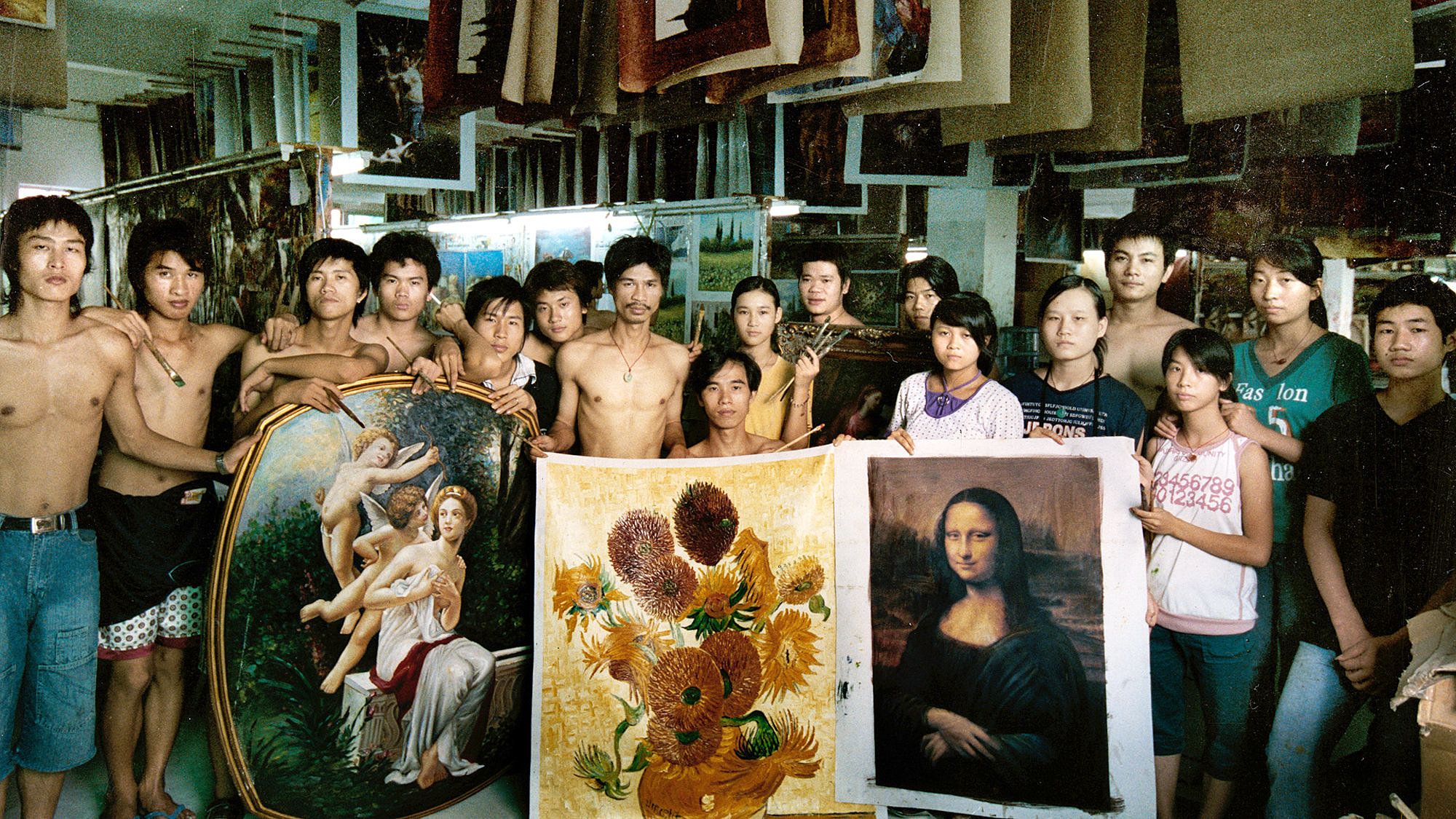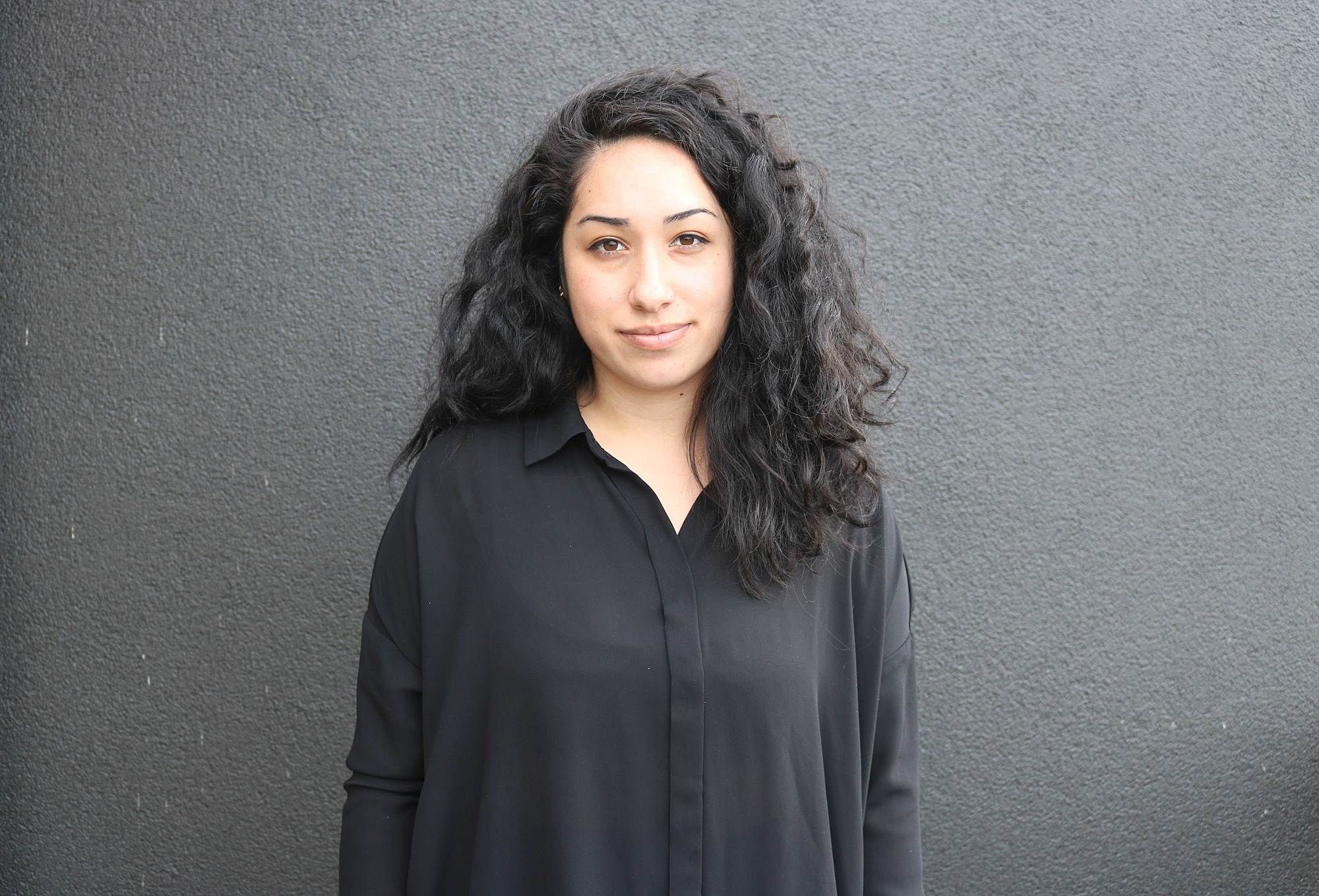The Artist as Technician: Considering China’s Van Goghs and Art and Craft
Who gets to be considered an artist?
Who gets to be considered an artist?
The debate between art and craft is a long-standing one and is often characterised by another debate entirely, between intellect and ability. The Greek word techně, which is often translated to mean art and the associated human ability to make and perform, is the root word for ‘technique’, ‘technology’ or ‘technical’, and suggests an intrinsic connection between art and skill. When looking for contemporary definitions of an artist, we get results such as “a person who creates paintings or drawings as a profession or hobby”, “a person who makes and creates art as an occupation”, “a person who is skilled at some activity” or “a person whose trade or profession requires a knowledge of design, drawing, painting, etc.” Yet despite this, so much of what contemporary art is based on is innovation of thought, of finding new ways to make and think rather than mastering skill.
This question of what makes an artist – pure skill, or some other combination of originality, critical context and luck – is at the fore of China’s Van Goghs(2016), directed by Yu Haibo and Yu Tinaqi Kiki and showing at this year’s NZIFF. It follows the story of Zhao Xiaoyong, an oil painter who works and lives in Dafen Village in Shenzen, China. Dafen is the world’s largest oil-painting village, providing employment to some 10,000 painters who produce replicas of the Western canon’s famous paintings. Zhao is a Van Gogh master, replicating hundreds of thousands of the Dutch post-impressionist’s classics - The Starry Night (1889), The Potato Eaters (1885), his final self-portrait (1889), and of course the various versions of Sunflowers.
Last year I spent time in Dongguan, about an hour’s drive from Dafen. Dongguan, a manufacturing town, is known for its production of toys, jewellery and technology. It’s home to the Meitai factory, which produces Barbie and her accessories. I was there to meet an artist whose work comments on ideas of labour, production and waste. His studio is an entire floor of an abandoned apartment building, apartments which were constructed to house migrant labourers employed at the nearby factories. There is a certain derogatory tone that New Zealanders have when we talk about Chinese manufacturing, a feeling of China being at the end of the developmental and technological ladder and not the top. Yet when I was there, I couldn’t help but feel as though I was at the start of the world. If the production and manufacturing of Guangdong ended, the Western world would be screwed. These people, these factories and these businesses are literally making the world’s economy function. The web of power, production and labour is much more complex than simple supply and demand. We are conditioned to imagine an assembly-line economy that is menial and uncomplicated, yet the people and the practitioners in these spaces are often passionate and skilled. Perhaps the tension really lies with the Western consumers that laud originality while creating a consumerist culture based on the disposable.
Both of these films beg the question of what an artist is, and who gets to be considered as one.
It’s this complexity that we learn about when we are taken into Zhao’s studio. The room, a two bedroom apartment, is full of people painting Van Goghs, with screens of completed versions hanging from the ceiling to dry. Working from 6x4 photographs, books and iPads, Zhao, his family and his students have painted over 100,000 Van Goghs between them, on orders from European clients. Documented in this detail, it is startling to realise that these copies are not printed in any way, but instead tirelessly hand painted. And Zhao is not just a simple mimic - he has an absolute admiration for the artist, his mind and his work, to the point where he dreams about Van Gogh. Yet during a conversation between Zhao and a taxi driver on his way back to his hometown, when he says he paints other people’s paintings for a living, the driver asks, “So do you plagiarise them?”
This conversation around legitimacy recalls Sam Cullman and Jennifer Grausman’s Art and Craft (2014), a documentary which featured in the NZIFF three years ago. The opening line of the film, from its subject, Mark Landis, is food for thought in a time of talented re-creators: “Nothing is original under the sun, everything comes back to something”.
Landis is a prolific fine art forger, who for over 30 years duped over 40 American museums with an impressive array of ingeniously crafted fakes. These ranged from 16th-century religious paintings to illustrations by Dr Seuss, with more than 100 pieces making it into the collections. Sometimes, he would replicate the same work for 6 or 7 museums.
Unlike Zhao, whose love of Van Gogh and innate skill for painting has given him a desire to be an artist, Landis grew up not wanting to be an artist, but a philanthropist, a rich art collector as channeled through television and movies. So his need to make art is not for the sake of art itself, but for the sake of being able to give it away. The enjoyment for Landis is in the art world’s intrigue – from forging auction documents and crafting elaborate stories to go along with the fakes, to finally seeing his work on display in the museum he tricked.
The best parts of Art and Craft revolve around the squirm of the curators, embarrassed by Landis and seeking revenge. However, they are unable to take legal action - selling forged art may be a crime, but gifting it isn’t. Their helpless disgust is juxtaposed with Landis admitting that he just uses colour pencils because “they can’t tell” and that he really just likes “to do arts and crafts”. But in a way, what he does is actually the ultimate in high-stakes performance art, since it requires acute skill and understanding of the museum and art infrastructure.
Art and Craft ends with an exhibition of Landis’ work, Faux Real, at the University of Cincinnati museum. It’s curated by two of the deceived curators in their clear vendetta to expose and discredit Landis. Though it might make it harder to operate in future, I can’t help but think this acknowledgement as a master forger actually means that Landis wins, since it’s the acknowledgement he wanted.
At the opening of Faux Real, numerous gallery visitors try to convince him to make his own work under his own name, but perhaps they are missing the point. Originality is not of interest to Landis – as the documentary shows, he finds a reassurance in copying things. Zhao repeatedly faces the same line of questioning and encouragement while in Europe – a trip taken to see the Van Gogh Museum on invitation from one of his clients in Amsterdam – and it leaves him defeated, reaching the conclusion that he is a “painter-worker” and not an artist. As he says, “I have been painting for 20 years, but [all my work put together] is not as valuable as one piece in the museum.” When he sees his work being sold not in a gallery but merely in a “souvenir shop”, he questions not only the value of his work but also his own value as an artist and person. And yet, despite this, his respect and admiration for Van Gogh never waivers.
Both of these films beg the question of what an artist is, and who gets to be considered as one. There are uncomfortable hierarchies between an artist and a technician, and between art and craft which these films challenge. Through the scarred curators who got duped and Zhao’s love of every brushstroke, we are confronted by our own preconceptions around authenticity, skill and originality. While set in wildly different contexts, following artists with very different intentions, China’s Van Goghs and Art and Craft expose the fragility and exclusivity of contemporary art. It’s a welcome shake-up of the expected pecking order.
China’s Van Goghs


